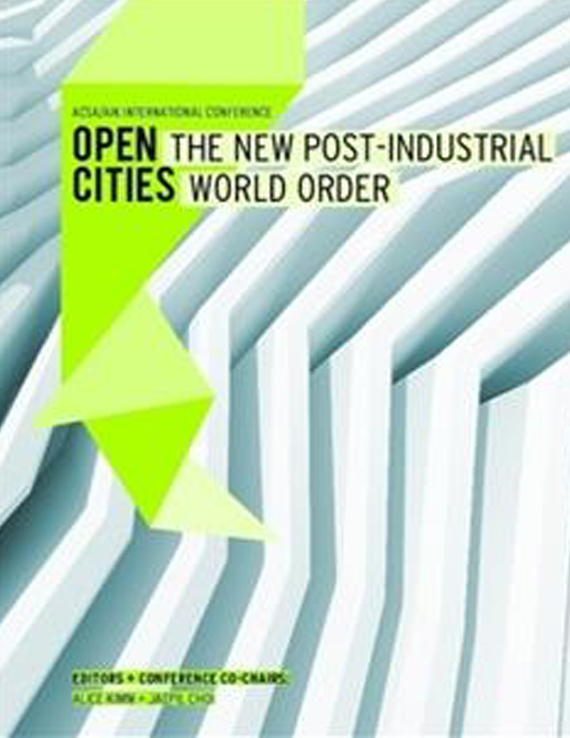Author(s): Chiafang Wu & Stephen Hugh Roe
The Open City is a city more open to the vicissitudes of climate and the meteorological.Rather than the conventional architectural strategy of omitting or amelioratingthe weather, this paper looks at a design-research and building projectover several years which attempts to incorporate the turbulent into the fabric ofbuildings and thereby to explore the potential atmospheric, perceptual and programmaticeffects of such a strategy.The paper begins by identifying the turbulent not just as representative of the Meteorologicalbut, building on the work of Michel Serres, as an “abstract machine”of change –and, by extension creativity– in multiple fields. Recent developmentsin digital culture have allowed some of the wildness of nature to seep into theblack boxes on our desktops. But how do we harness that wild energy in design?And, following Serres, is it capable of producing creative insights that go beyondthe generation of novel forms? Is the intuition of the shape in the clouds –recognizedby artists from da Vinci to Bacon– a tool that can be brought through designfrom an initial (fuzzy) insight to a final (perhaps blurry) building?Key to this process is the increasing ease with which we can simulate the turbulentand its consequent instigation as a potential design tool. Through the activationof the static points of Cartesian space into the dynamic vectors of fluid-dynamicspace a transformation in our understanding of the nature or geometric organizationtakes place. Driven by an underlying abstract-machine of turbulence pointsare let loose to become the vectors of a transformed space where a nebulousmateriality supersedes the certainty of singular descriptive geometry.This potential is explored through a series of research projects and design studioscarried out in schools in London and Taiwan. The atmospheric, and consequentprogrammatic, effects resulting from this research are explored through several(competition) proposals for large scale public spaces. Finally we look at some builtexamples which, through either tectonic organization or material transformation,incorporate the changing dynamics of the turbulent into their built fabrics.Consistent issues which are explored through these examples -both built and unbuilt-are: The process of translation of the non-linear patterns of the turbulentinto architecture as a generator of novel descriptive techniques; Progressive orientationalvariation and the material methodologies of achieving this (connectors,ratchets, bends) are contrasted with static, though perceptually dynamic, materialeffects (colour, moisture saturation etc.) as potential strategies.This extended, difficult, sometimes tortuous but nevertheless rewarding processof transformation of an idea through research, design and experimentation into abuilt result demonstrates how a singular –if eccentric, or even obsessive– concerncan become manifest in different ways across multiple materialities, temporalitiesand scales eventually becoming manifest in building. In fact it talks as much aboutthe obsessions which drive the movement from design to building as it does aboutthe techniques of that process — as such it may form an interesting complementto other papers to be presented.
Volume Editors
Alice Kimm & Jaepil Choi
ISBN
978-0-935502-91-6

 Study Architecture
Study Architecture  ProPEL
ProPEL 
